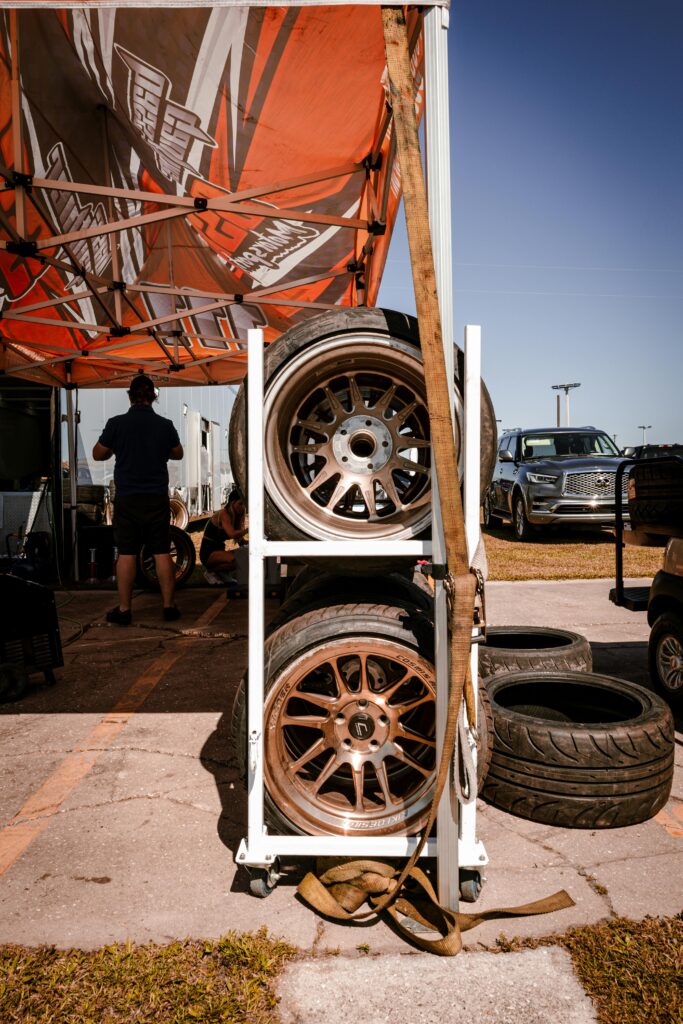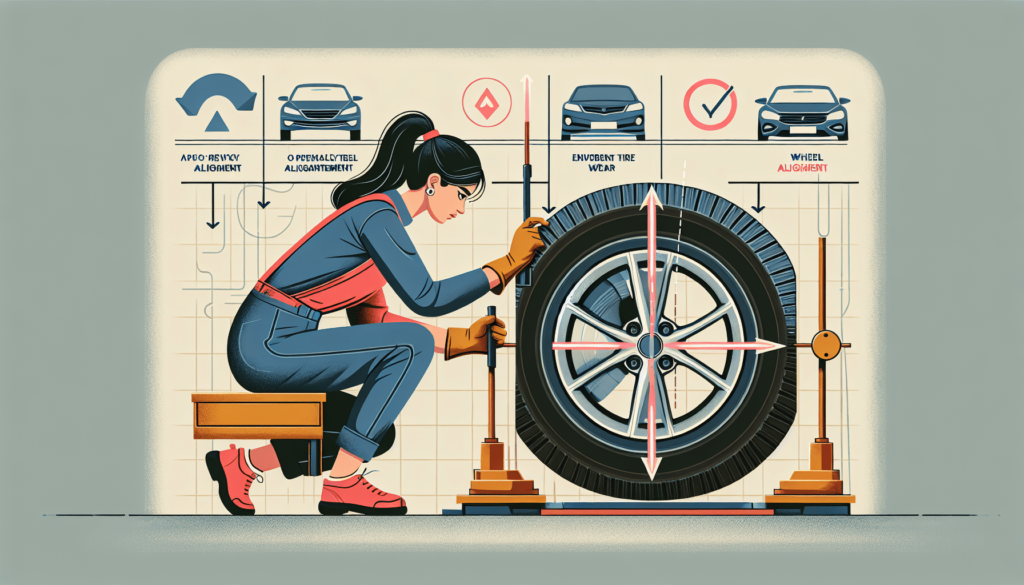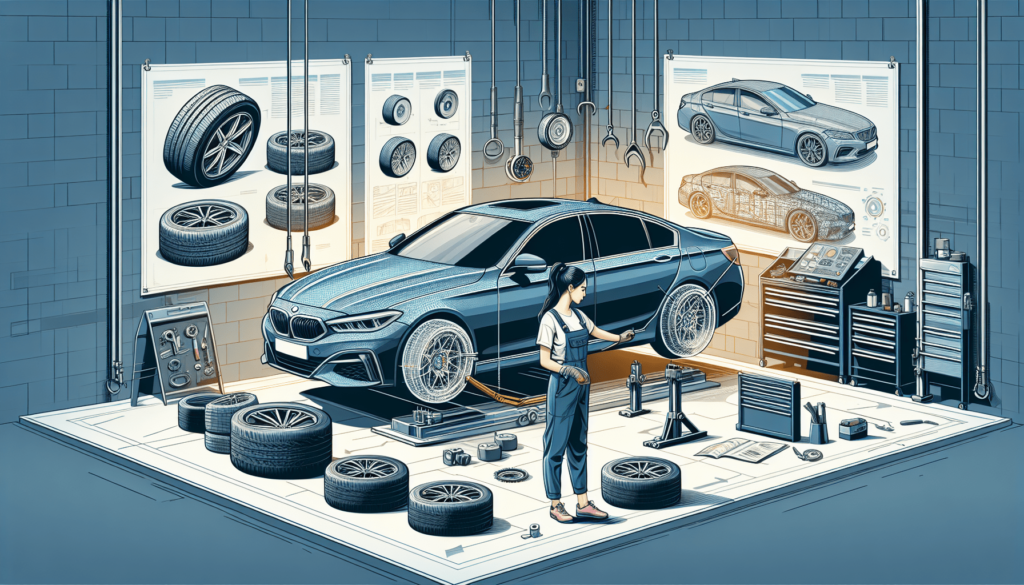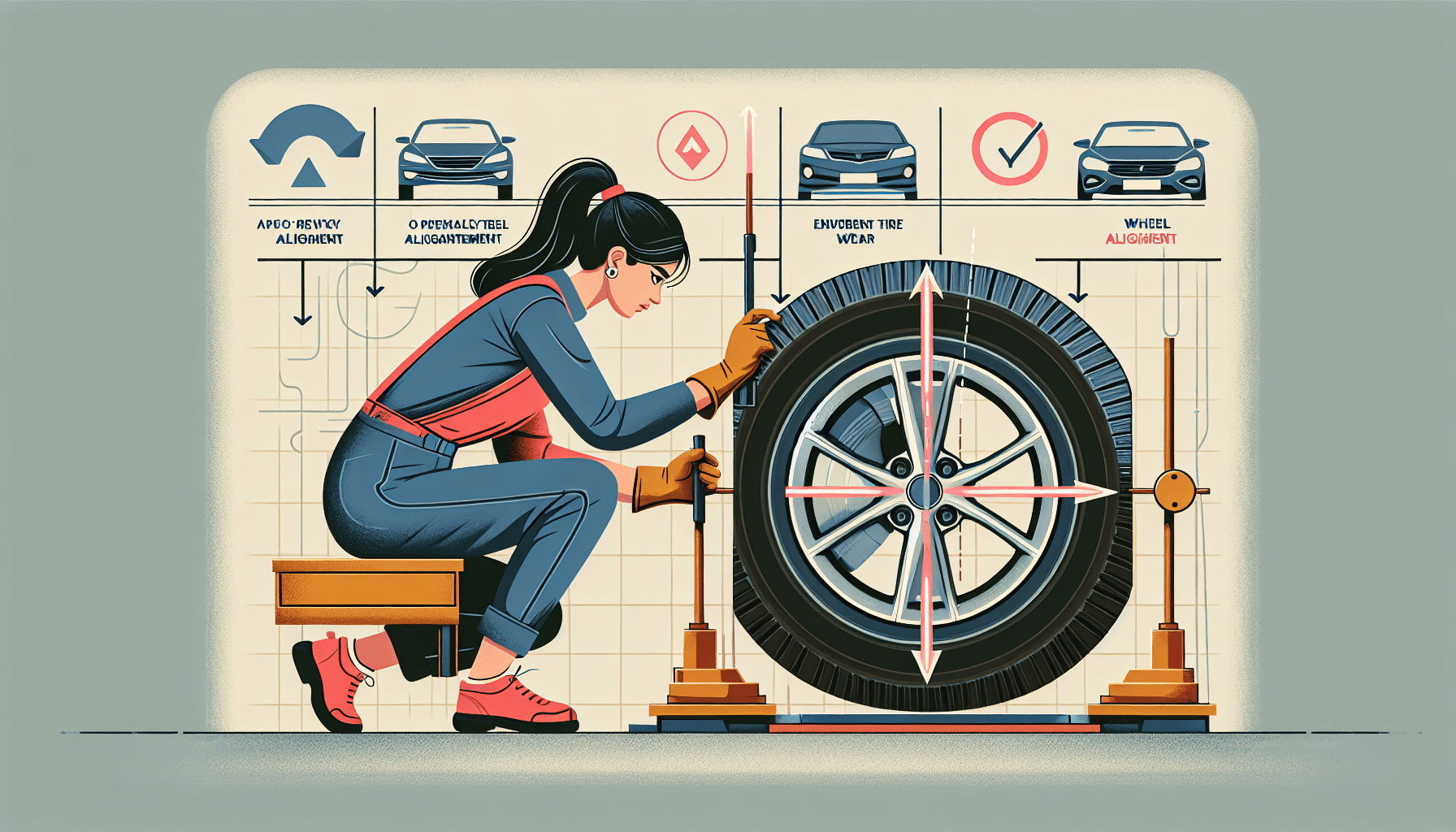If you’ve ever experienced your car pulling to one side while driving, you know it can be both frustrating and potentially dangerous. But did you know that properly aligning your wheels can help prevent this issue? Wheel alignment plays a crucial role in ensuring that all four wheels are pointing in the same direction, which can greatly reduce the likelihood of your tires pulling to one side. In this article, we will explore the importance of wheel alignment and how it can help keep your car on the straight and narrow.
What is tire pull?
Description of tire pull
Tire pull refers to the phenomenon where a vehicle tends to draw to one side while driving, instead of maintaining a straight path. This can be quite a frustrating experience, as it requires constant effort to keep the vehicle on track. Tire pull can occur due to various factors, but one significant factor is misalignment of the wheels.
Causes of tire pull
Tire pull can be caused by several factors, with misalignment being a common culprit. Other potential causes include uneven tire pressure, worn-out suspension or steering components, and road conditions. Misalignment occurs when the angles of the wheels deviate from the manufacturer’s recommended specifications. This can happen due to everyday wear and tear or from hitting potholes or curbs. Irregular tread wear can also contribute to tire pull.
What is wheel alignment?
Definition of wheel alignment
Wheel alignment refers to the adjustment of the angles of the wheels, relative to each other and the vehicle’s frame. It ensures that the wheels are parallel to each other and perpendicular to the ground. The primary purpose of wheel alignment is to optimize the vehicle’s handling, stability, and tire performance.
Importance of wheel alignment
Proper wheel alignment is essential for a variety of reasons. Firstly, it promotes even tire wear, ensuring that all tires wear down evenly and last longer. It also helps maintain the vehicle’s stability and steering response, contributing to a smoother and safer driving experience. Additionally, proper alignment can improve fuel efficiency by reducing rolling resistance and decrease the strain on suspension and steering components, potentially extending their lifespan.

How does wheel alignment affect tire pull?
Alignment angles and tire pull
Alignment angles play a crucial role in determining tire pull. There are three primary angles to consider: camber, caster, and toe. Camber refers to the tilt of the wheels inward or outward when viewed from the front. Caster relates to the angle of the steering axis when viewed from the side. Toe refers to the angle of the wheels in relation to each other when viewed from above.
If any of these angles are out of alignment, it can lead to tire pull. For example, excessive positive camber can cause the vehicle to pull towards the side with the most positive camber. Similarly, an uneven toe angle can result in the vehicle drifting to one side. Therefore, proper wheel alignment is necessary to eliminate tire pull.
Effects of misalignment on tire pull
Misalignment can have various negative effects, leading to tire pull. When the wheels are not aligned correctly, the tires may experience uneven tread wear. This not only compromises tire performance but also reduces their lifespan. Additionally, misaligned wheels can put excessive strain on suspension and steering components, potentially resulting in premature wear and costly repairs. Moreover, tire pull caused by misalignment can compromise the vehicle’s stability and handling, making it unsafe to drive.
Signs of tire pull
Uneven tread wear
One of the most prominent signs of tire pull is uneven tread wear. If you notice that the tires on one side of the vehicle are wearing down more quickly or differently than the other side, it’s likely an indication of tire pull.
Vehicle pulling to one side
Another evident sign of tire pull is the vehicle continuously pulling to one side while driving. Even when the steering wheel is held straight, the vehicle may drift towards a particular direction, requiring constant correction.
Steering wheel off-center
If you find that the steering wheel is not perfectly centered when driving straight, it can suggest the presence of tire pull. This misalignment can occur due to the force exerted by tire pull on the steering system.

Alignment correction for tire pull
Evaluating alignment using equipment
To correct tire pull caused by misalignment, it is necessary to evaluate the alignment angles using specialized equipment. Professional alignment technicians utilize tools such as an alignment rack, laser or optical alignment systems, and sensors to measure and assess the angles of the wheels accurately.
Adjusting alignment angles
Once the misalignment has been identified, adjustments can be made to correct the alignment angles. This involves making precise adjustments to the suspension components, such as the tie rods, control arms, and struts, to bring the wheels back into proper alignment. The process may vary depending on the type of suspension system and the specific alignment angles that require correction.
Alignment maintenance for tire pull prevention
Regular alignment inspections
To prevent tire pull, it is crucial to schedule regular alignment inspections. Even in the absence of noticeable symptoms, the wheels can gradually go out of alignment due to normal wear and tear. It is recommended to have the alignment checked annually or whenever you notice any signs of tire pull, uneven tire wear, or steering issues.
Following manufacturer recommendations
Following the manufacturer’s recommendations for wheel alignment is essential. Every vehicle has specific alignment specifications provided by the manufacturer, and these should be followed to ensure optimal performance and prevent tire pull. It is also critical to have the alignment checked after any significant suspension or steering repairs or when installing new tires.

Other factors affecting tire pull
Tire condition and pressure
The condition and pressure of the tires can significantly influence tire pull. Uneven tire pressure or worn-out tires with irregular tread patterns can contribute to tire pull. Regularly checking and maintaining proper tire pressure, as well as replacing tires when necessary, can help prevent tire pull.
Suspension and steering components
The condition of suspension and steering components, such as ball joints, bushings, control arms, and tie rods, can affect wheel alignment and contribute to tire pull. If these components are worn or damaged, they may cause misalignment and subsequent tire pull. Regular maintenance and timely replacement of these components can help prevent tire pull and ensure proper alignment.
Road conditions
Road conditions can also affect tire pull. Uneven or poorly maintained roads can place stress on the suspension and steering components, potentially causing misalignment and tire pull. Additionally, hitting potholes, curbs, or other road hazards can lead to immediate misalignment and tire pull. It is important to exercise caution while driving and avoid rough road conditions whenever possible.
Benefits of proper wheel alignment
Improved fuel efficiency
Proper wheel alignment can contribute to improved fuel efficiency. When the wheels are aligned correctly, there is less rolling resistance, allowing the vehicle to move more smoothly and consume less fuel. Misaligned wheels, on the other hand, cause increased resistance, leading to decreased fuel efficiency.
Enhanced tire performance
Correct wheel alignment promotes even tire wear, ensuring that all tires maintain optimal contact with the road surface. This results in improved traction, handling, and braking performance. By maximizing tire performance, proper alignment enhances the overall driving experience.
Safer driving experience
Proper wheel alignment is crucial for a safe driving experience. Misaligned wheels can compromise the vehicle’s stability, making it more challenging to control and potentially increasing the risk of accidents. By maintaining proper alignment, drivers can enjoy a more predictable and safer driving experience.

When to seek professional help
Performing alignment at home vs. professional alignment
While it may be tempting to attempt a DIY alignment to correct tire pull, seeking professional help is highly recommended. Professional alignment technicians have the expertise, specialized equipment, and knowledge of specific vehicle models to accurately diagnose and correct alignment issues. Attempting alignment at home without the proper equipment and knowledge may result in further misalignment or damage to suspension and steering components.
Time intervals for alignment checks
It is advisable to have the alignment checked at least once a year or when signs of tire pull or uneven tread wear are observed. Additionally, alignment should be performed after any significant suspension or steering repairs and when new tires are installed. Following the manufacturer’s recommendations for alignment intervals is crucial for maintaining optimal vehicle performance and minimizing the risk of tire pull.
Conclusion
Tire pull can be a frustrating and potentially dangerous issue, but it can be effectively prevented and corrected through proper wheel alignment. Misalignment of the wheels is a common cause of tire pull, which can lead to uneven tire wear, pulling to one side, and an off-center steering wheel. Regular alignment inspections and following the manufacturer’s recommendations are essential for preventing tire pull. While professional alignment is recommended, attempting alignment at home without the necessary tools and knowledge is not advisable. By maintaining proper wheel alignment, drivers can enjoy improved fuel efficiency, enhanced tire performance, and a safer driving experience overall.


